Peter Datin, Derek Stedman and Vahid Valamanesh
Peter Datin is a Director - Model Development, RMS
Derek Stedman is a Lead Modeler - Model Development, RMS
Vahid Valamanesh is a Lead Modeler - Model Development, RMS
Log In
Access all customer product support, event response, and training in one place
LifeRisks PortalFind modeling tools based on best practice actuarial techniques and medical science
Miu PortalExplore analytics and risk insights for the alternative capital market
Insurance Solutions
Formerly Moody’s RMS
Introduction
After a major hurricane or a similar natural disaster, RMS routinely sends modelers and engineers into the affected region to survey the destruction. This field reconnaissance in the immediate aftermath of an event serves several purposes:
Of course, RMS is always concerned about the safety of its personnel and waits until it is safe to send anyone to the disaster areas. We also have to make sure that we can travel to the different areas affected by the disaster without too much difficulty.
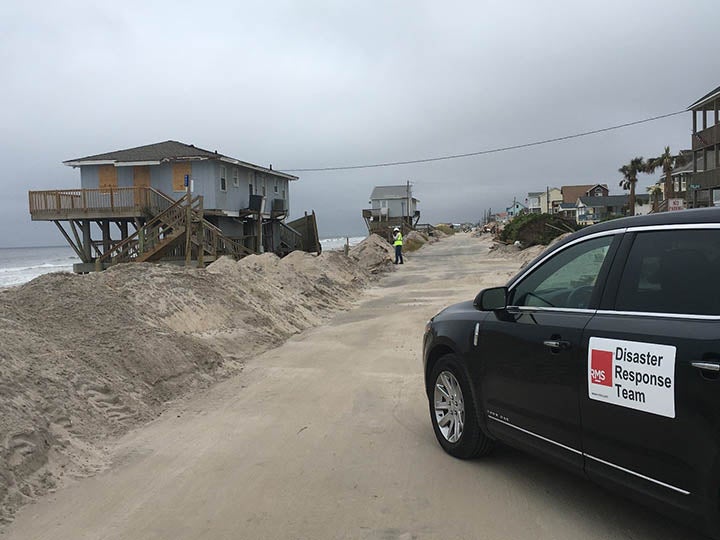
Hurricane Florence Damage Observations
After Hurricane Florence made landfall near Wrightsville Beach, North Carolina, on September 14, 2018, RMS began monitoring the situation on the ground. Due to the significant rainfall in the region, major flooding ensued, blocking many roads and creating hazardous conditions for travel. RMS waited a few extra days before sending a small group of engineers and modelers into the affected region.
Tree Fall
Tree fall was prevalent throughout the region from Charleston, South Carolina, up to the North Carolina barrier islands near Morehead City and inland for quite some distance, due to the significant amount of rain and the slow speed at which the storm moved once it made landfall. The damage to buildings caused by tree fall varied depending on the area. For example, in South Carolina the RMS team saw few trees that fell onto houses, but in parts of North Carolina, the number of trees falling on homes was significantly higher, even though only a small percentage appeared to have caused significant damage.
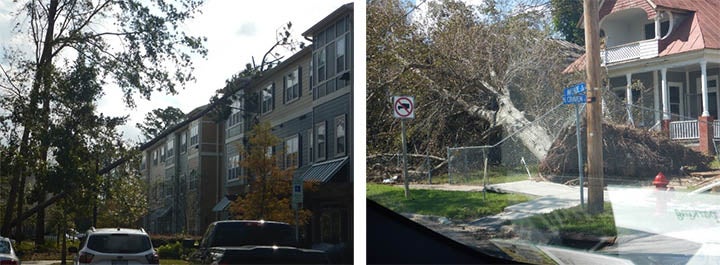
Wall Cladding
One common failure observed in the Carolinas immediately after Hurricane Florence was to vinyl siding. This type of wall cladding is common in this area and did not perform well, even though the wind speeds experienced in Florence were below the design wind speeds.
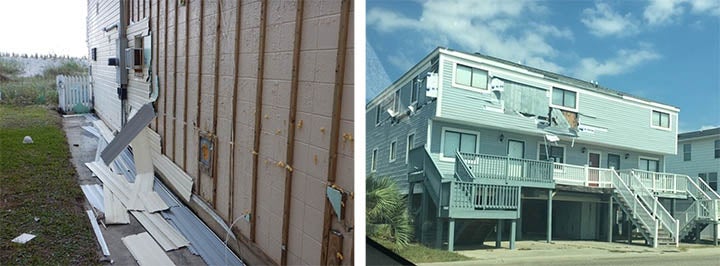
Roof Cover
The performance of asphalt shingles was closely linked to their age. Visibly older roofs often had shingle failures, while younger roofs in the same local area were not visibly damaged. Clay tile roofs are not common in the Carolinas, and of the small number of them observed by the team, most had at least a few tiles broken or displaced. Consistent with observations from previous storms including Hurricane Irma in Florida in 2017, was the superior performance of standing seam metal roofs. The RMS team in the Carolinas did not observe any standing seam metal roofs which were visibly damaged.

Flooding Damage
Hurricane Florence brought both coastal storm surge and significant inland flooding. The RMS team captured some of the damage from both of these destructive water events. Most notable was that storm surge impacts seemed to be muted by the large sand dunes along parts of the North Carolina coast including Atlantic Beach.
Both storm surge and inland flooding were significant in New Bern, North Carolina. The team estimated approximately ten feet of surge in some coastal areas as well as ten feet of inland flooding in parts of the town. Flood damage is more commonly indicated by large piles of debris and contents that have been placed along the roadsides.
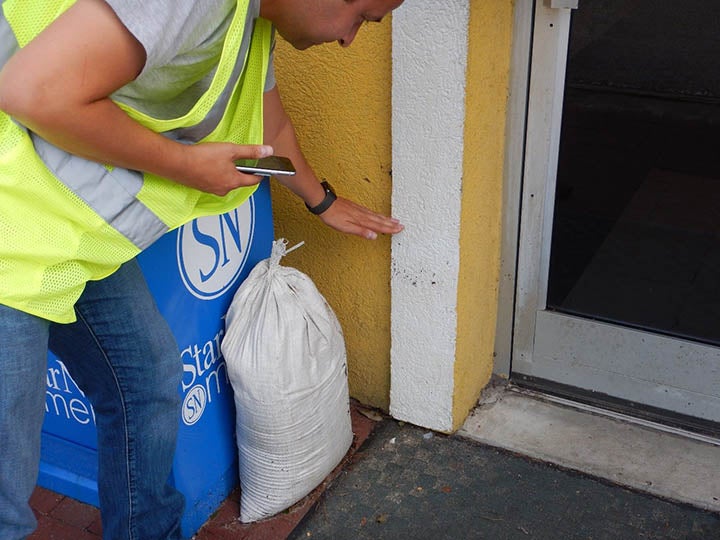
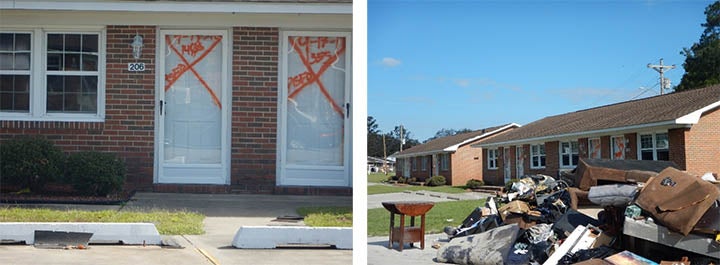
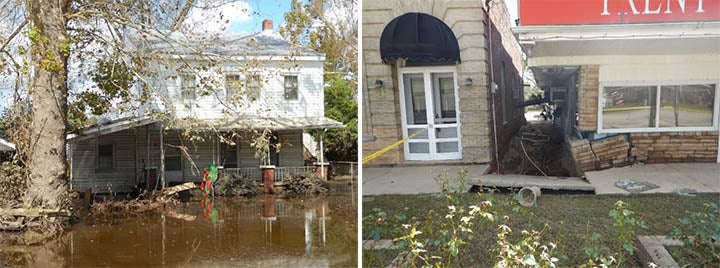

Comparison with Hurricane Matthew
Hurricane Florence impacted some of the same areas in the Carolinas that were affected by Hurricane Matthew in 2016. The RMS team was able to visit a few of the same buildings damaged by Matthew to see how they fared with Florence. In some areas, Matthew caused more wind and/or surge damage than Florence and in other areas the reverse was true.
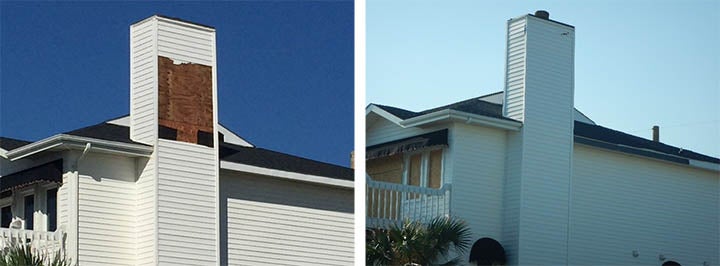
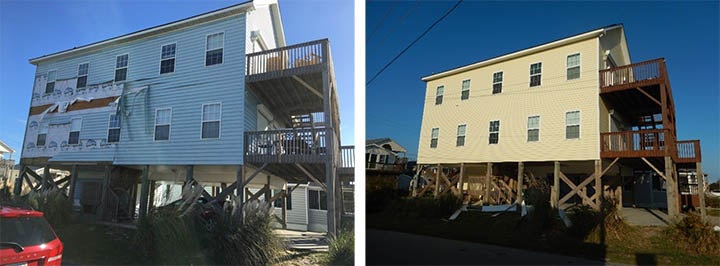
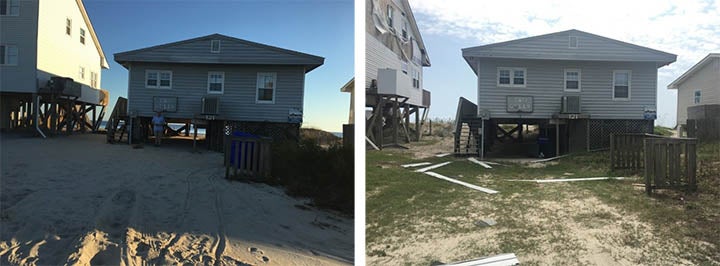
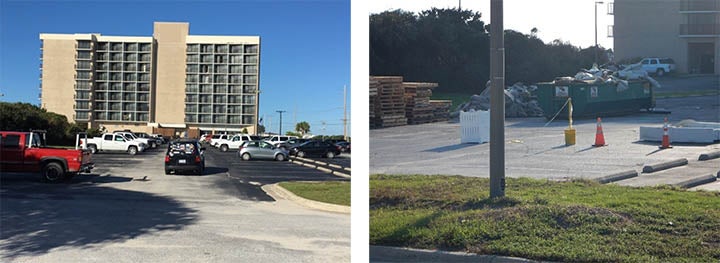
Conclusions
With the RMS damage reconnaissance team visiting the Carolinas a few days after Hurricane Florence impacted the region, the information gathered helps us understand the extent of the damage as well as its frequency and severity. While Florence did cause some wind damage, most of this damage was minor, but in some cases, minor to moderate wind damage had caused significant water intrusion and interior damage. Flooding damage was significant in some areas impacted by Florence, both by storm surge and inland flooding from excessive rainfall.
Each hurricane is unique in its impact at landfall. By having boots on the ground soon after landfall, RMS is able to observe any unique or uncommon damage as well as damage “themes” that are consistent across multiple events in different regions. All of this helps inform the collective knowledge within our model development group to improve, calibrate, and substantiate our building vulnerability functions and damage models.
